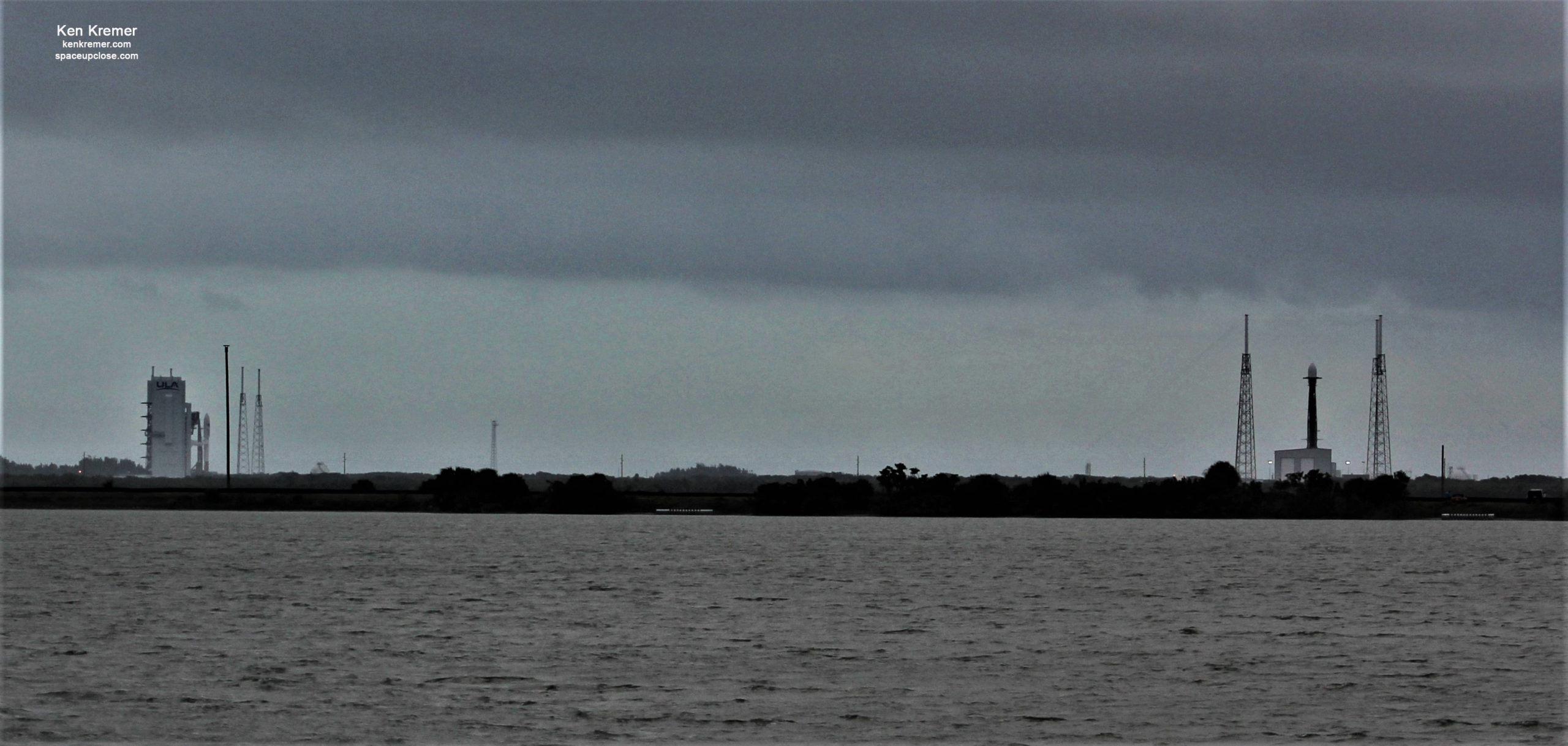
For Space Upclose.com and RocketSTEM
CAPE CANAVERAL SPACE FORCE STATION, FL – Absolutely dreadful weather forced a scrub to this mornings (May 16) Atlas V liftoff and thereby delayed the back-to-back double header of ultra-rare and exciting rocket launches slated for this weekend by a day each by rocket makers ULA and SpaceX respectively from the Florida Space Coast – pretty much as expected based on the ultra-poor weather forecast.
Inclement weather in the form of drenching rainstorms, blustery high winds and thick threatening clouds dashed the hopes for a weekend blockbuster of launches, starting this Saturday morning, when the launch of the mighty ULA Atlas V carrying the top secret X-37B space plane for the new United States Space Force was called off at the very end of the two-hour-long window at 10:23 am EDT (1423 GMT) May 16.
“Hold, hold, hold. The #AtlasV countdown has been stopped due to “no go” weather conditions ULA announced during the live webcast and tweeted.
Hold, hold, hold. The #AtlasV countdown has been stopped due to "no go" weather conditions. Live updates: https://t.co/5ZftXlaW5X
— ULA (@ulalaunch) May 16, 2020
2 rockets on 2 launch pads are currently raised at adjoining Cape Canaveral Space Force Station launch complexes situated barely 1.5 miles apart – namely the ULA Atlas V on pad 41 and the SpaceX Falcon 9 on pad 40.
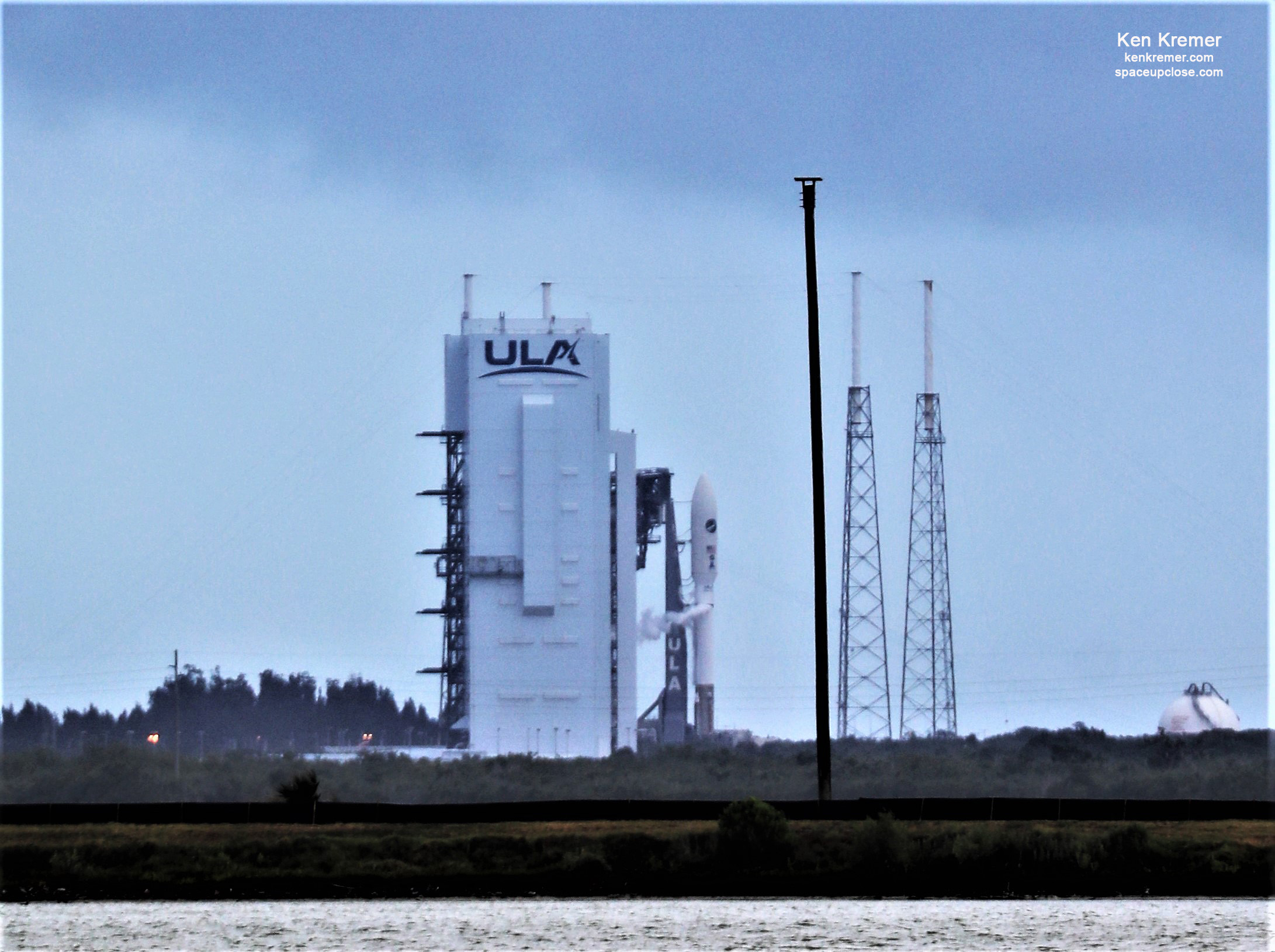
See our lead photo showing the ULA Atlas V on pad 41 (left) and the SpaceX Falcon 9 on pad 40 (right) and the dismal weather system overhead.
And enjoy our photos from todays Atlas V launch attempt taken on site at Cape Canaveral Space Force Station.
Be sure to watch for my onsite reporting Sunday
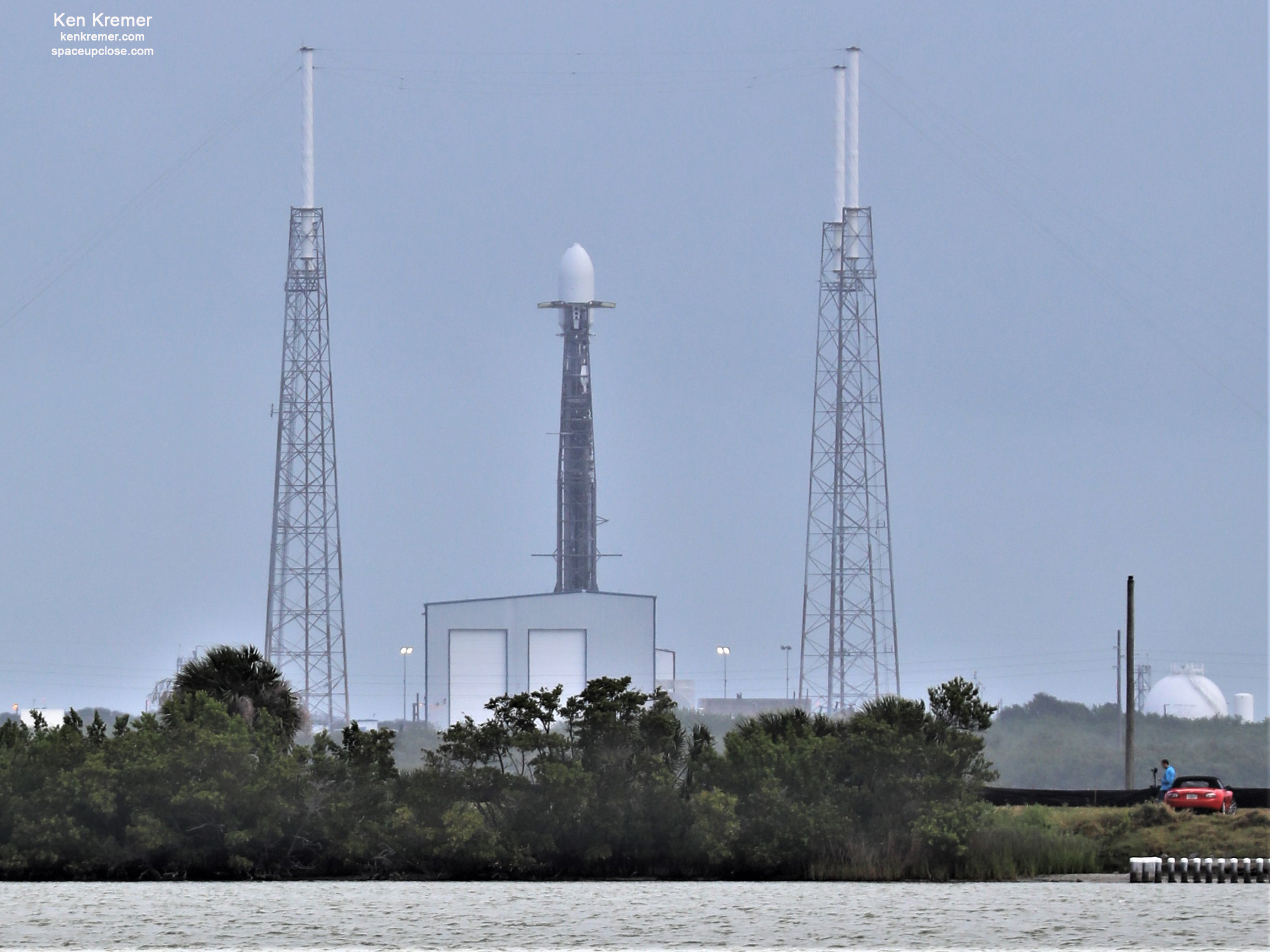
Until the weather intervened the current plan for this weekend launch double header comprised of back to back liftoffs of a ULA Atlas V launch of the clandestine X-37B winged reusable spaceplane for the new United States Space Force scheduled for Saturday morning at 8:24 a.m. EDT May 16 followed barely 20 hours later by SpaceX’s Falcon 9 launch on Sunday morning at 3:53 a.m. ET May 17.
Both the Atlas V and Falcon 9 liftoffs now shift almost 24 hours to the right – so we still get a double heard on Sunday and Monday!!
“Darn weather. See you tomorrow. Going to need everyone to focus on those calm, clear thoughts even harder,” tweeted ULA CEO Tory Bruno.
Darn weather. See you tomorrow. Going to need everyone to focus on those calm, clear thoughts even harder… #USSF7
— Tory Bruno (@torybruno) May 16, 2020
And now they are even slightly closer – at some 19 hours apart !!
So drop by if you can.
It turned out that there were 2 launch windows for the Atlas V ULA announced just prior to the first window opening:
Today's launch opportunity has two 10-minute windows available for #AtlasV to send #X37B into space. The first window opens at 8:24amEDT (1224 UTC). The second window opens at 10:13amEDT (1413 UTC).
— ULA (@ulalaunch) May 16, 2020
Here is the newly updated launch schedule:
The ULA Atlas V rocket is scheduled to launch the USSF-7 mission with the clandestine X-37B spaceplane on the OTV-6 mission for the U.S. Space Force from Space Launch Complex-41 at 9:14 a.m. EDT (1314 GMT) Sunday, May 17.
“Today’s launch opportunity has two 10-minute windows available for #AtlasV to send #X37B into space. The first window opens at 8:24amEDT (1224 UTC). The second window opens at 10:13amEDT (1413 UTC),” ULA said.
Today's launch of #AtlasV with the #USSF7 mission featuring the #X37B Orbital Test Vehicle was postponed due to inclement weather conditions. Launch is rescheduled for Sunday at 9:14amEDT (1314 UTC). Our live blog coverage begins at 1:45amEDT (0545 UTC). https://t.co/5ZftXlaW5X pic.twitter.com/VLbZR8P72p
— ULA (@ulalaunch) May 16, 2020
The 5x SpaceX Falcon 9 rocket is scheduled to launch the eighth Starlink mission with the next batch of 60 broadband internet communications satellites for SpaceX from Space Launch Complex-40 at 3:32 a.m. EDT (0732 GMT) Monday, May 18.
Due to a conflict on the Range, now targeting Monday, May 18 at 3:32 a.m. EDT for launch of Starlink
— SpaceX (@SpaceX) May 16, 2020
The chance of favorable weather tomorrow for the ULA Atlas V rises from only 40% GO on Saturday to 70% GO on Sunday.
The ULA/USSF mission has priority in case of a delay as a U.S. National Security mission and has taken the Sunday launch slot away from the SpaceX commercial Starlink mission.
You can watch both launches live at the company websites:
www.ulalaunch.com or http://www.ulalaunch.com/site/pages/multimedia_webcasts.html.
and www.spaceX.com
This launch will mark the sixth flight of the X-37B Orbital Test Vehicle (OTV-6) and the second mission for the U.S. Space Force.
Note: Due to further disturbances SpaceX just postponed their Falcon 9 launch to Tuesday.
The Atlas V will launch in the 501 configuration rocket, which includes a 5-meter-diameter payload fairing. The Atlas booster is powered by the RD AMROSS RD-180 engine, and the Centaur upper stage is powered by the Aerojet Rocketdyne RL10C-1 engine.
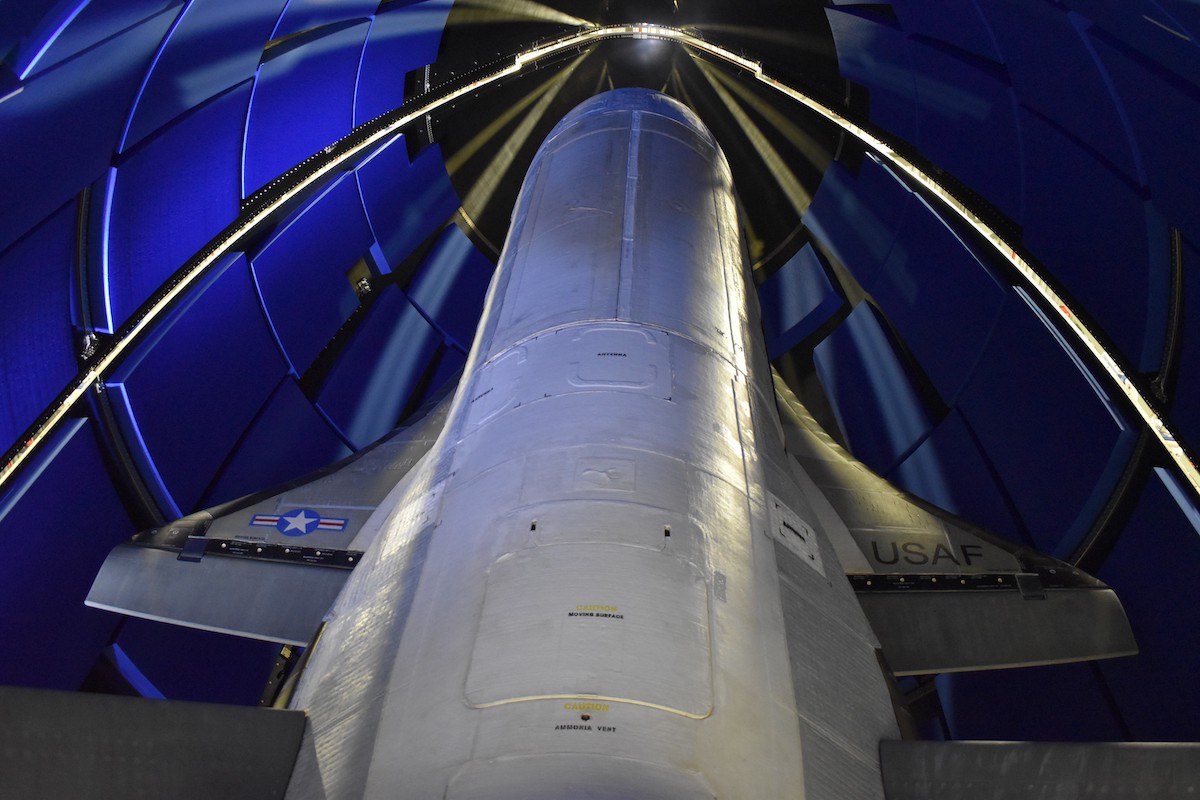
This will be the 84th launch of an Atlas V rocket and the seventh launch of the 501 configuration. The Atlas V 501 has been used exclusively for national security missions.
To date ULA has a track record of 100 percent mission success with 138 successful launches.
All OTV missions except the last one (OTV-5) have been launched by ULA
The U.S. Air Force X-37B secretive reusable mini spaceplane landed in the middle of the night under cover of darkness this morning, Sunday, Oct. 27, 2019 at the Kennedy Space Center in Florida after a record breaking mission of well over two years in orbit.
The SpaceX Falcon 9 is the upcoming eighth Starlink launch of broadband internet satellites.
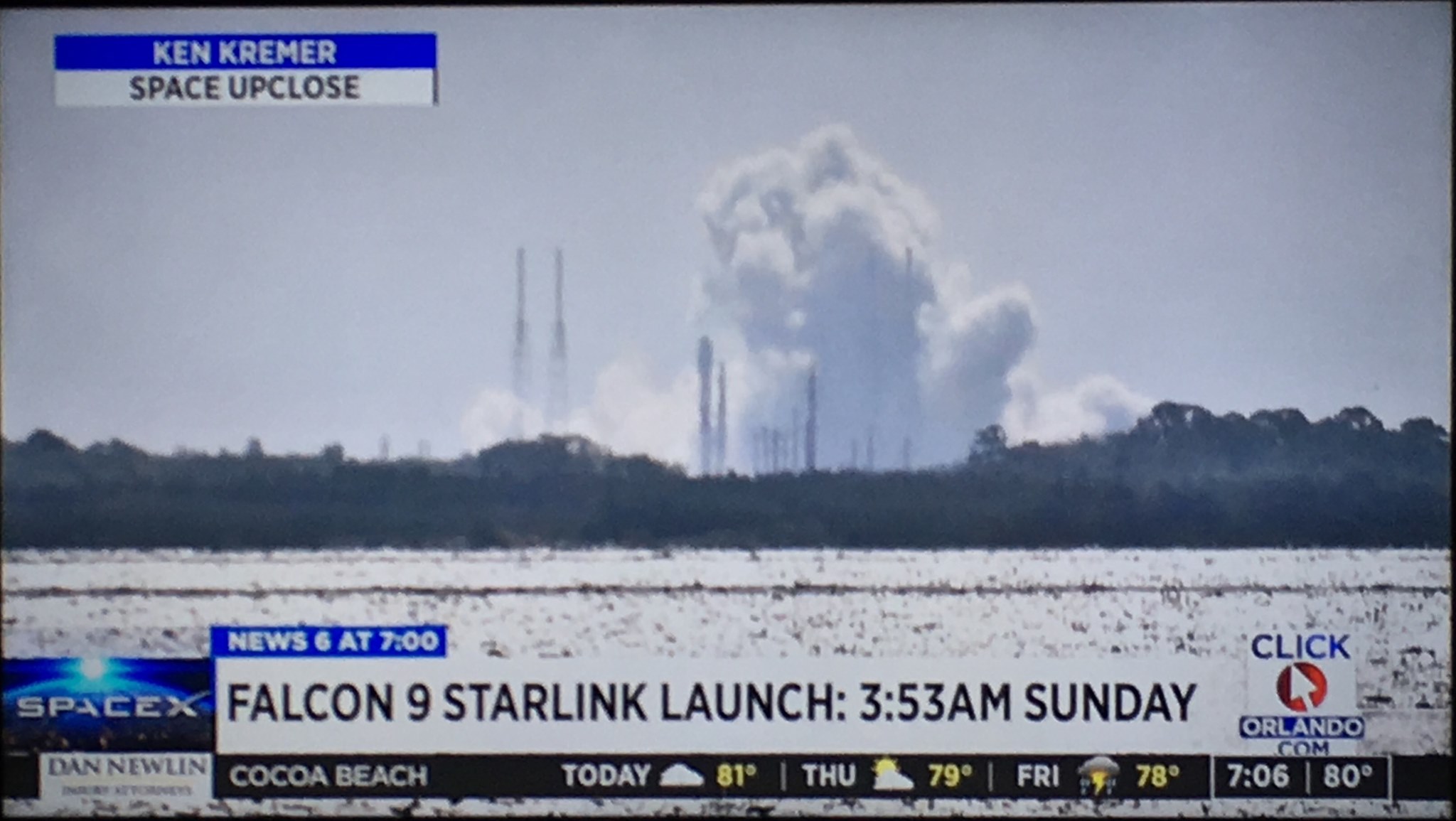
The payload comprises the eighth batch of 60 SpaceX built and owned Starlink broadband satellites launching to LEO with an overall mass of about 7.7 tons.
Watch Ken’s continuing reports about Artemis and onsite for live reporting of upcoming and recent SpaceX and ULA launches including Starlink, Solar Orbiter, In-Flight Abort, Mars 2020 and more at the Kennedy Space Center and Cape Canaveral Air Force Station.
Stay tuned here for Ken’s continuing Earth and Planetary science and human spaceflight news: www.kenkremer.com –www.spaceupclose.com – twitter @ken_kremer – email: ken at kenkremer.com
Dr. Kremer is a research scientist and journalist based in the KSC area, active in outreach and interviewed regularly on TV and radio about space topics.
………….
Ken’s photos are for sale and he is available for lectures and outreach events




